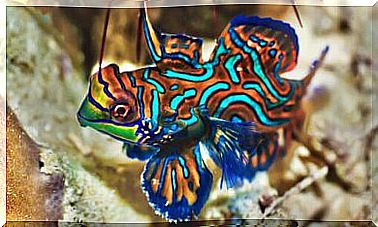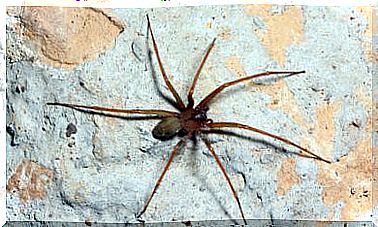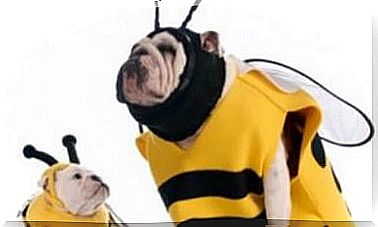All About Corals And Microscopic Algae
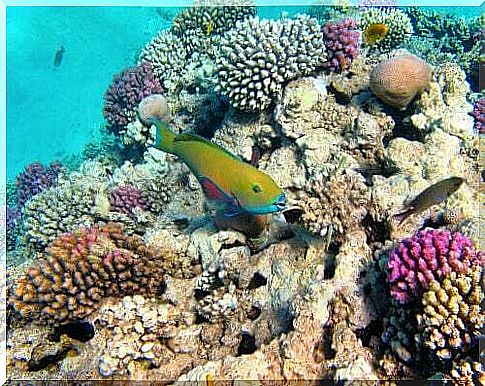
Coral reefs are one of the richest ecosystems on Earth. In fact, the Great Barrier Reef (2,600 kilometers long), in Australia, is considered the largest living being in the world, inhabited by more than 1,800 different species. In this article, we talk about corals and microscopic algae.
Did you know that coral reefs thrive thanks to the symbiosis they establish with a particular species of unicellular algae?
In this article we will reveal the secret that allows these wonderful structures, built from corals, to survive and proliferate for millions of years. We tell you all about corals and microscopic algae.
The symbiosis between corals and algae
In nature, relationships between two organisms of different species are very common. This bond is known as symbiosis and can last for a lifetime.
There are several types of symbiotic relationship, depending on how this association occurs:
- commensalism,
- mutualism,
- parasitism.
In the case of mutual symbiosis, the organisms that interact with each other benefit each other. In the marine ecosystem, one of the best known examples of mutualistic symbiosis is that which is established between corals and photosynthetic dinoflagellate algae. But first we will do a brief summary of what corals are.
What are corals?
Coral reefs are gigantic marine structures that are formed from the skeletons of organisms known as corals. Each individual coral is an animal called a polyp, which joins with the others to form colonies.
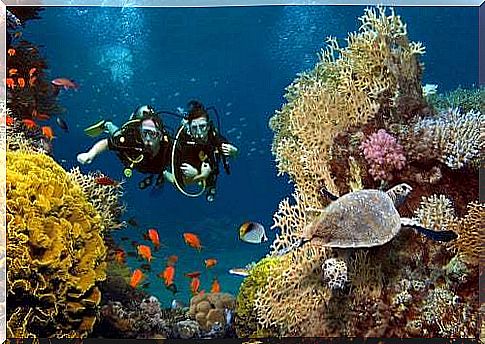
To get an idea of what polyps are, they are aquatic animals that belong to the same family as jellyfish and anemones.
They have a soft, cup-shaped body, from the end of which protrude tentacles like those of jellyfish. These animals live attached to a substrate, such as the seabed, so they do not have the ability to move.
It is important to know that not all polyps participate in the formation of coral reefs, but that we can also find them alone, anchored on a surface. They attract attention for their curious shapes and colors, which make them look like plants or trees. This is why they are often confused with plant species.
The polyps
These invertebrate animals belong to the Cnidaria phylum , and are characterized by gelatinous protuberances and pointed tentacles which they use for hunting.
Polyps generate a hard exoskeleton from seawater that serves to protect their soft bodies. In fact, they live in the exoskeletons of their ancestors and simultaneously secrete their own.
As a polyp multiplies, colonies are formed which act as an independent organism. Thus, the coral reef grows for years and reaches the length of thousands of kilometers.
Although these organisms often use their tentacles to obtain food such as plankton, most of the nutrients they need are obtained by feeding on microalgae, with which they establish a relationship of mutualistic symbiosis.
They are also known to have symbiotic associations with other living beings such as crabs, worms, sponges and octopuses.
Dinoflagellate algae
These microalgae of the genus Symbiodinium , commonly known as pyrophytes, peridines or dinoficee, are the main ones responsible for the evolutionary success of corals.
Dinoflagellates are considered to be one of the most important eukaryotic microorganisms, as they are the main food source of the oceans.
The coral-alga symbiosis
Dinoflagellates comprise a group of photosynthetic endosymbiotic algae that provide color and nutrients to corals. At the same time, they inhabit the tissue of the polyps, which offer them protection.
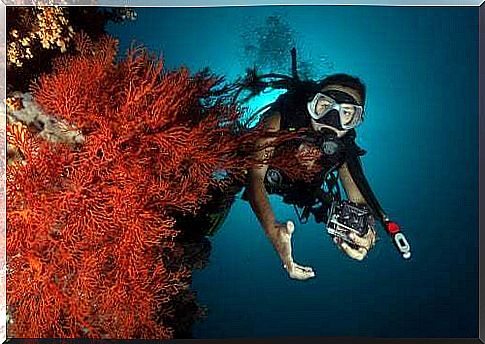
The inorganic waste substances generated by corals are used by photosynthetic dinoflagellates. From these compounds and sunlight, the algae will produce the nutrients that will be used by the corals. Therefore, dinoflagellates promote the growth and development of coral reefs.
This exchange is essential for the coral to form its exoskeleton composed of calcium carbonate (CaCO3).
Coral bleaching
Climate change is a major concern for the survival of coral reefs. The stress and acidification of the oceans are due to the increase in the temperature of the surface waters. This negatively affects corals, inhibiting their growth and calcification due to changes in pH.
Therefore, the coral-algae symbiosis is destabilized, causing the loss of algae, in particular their photopigments, which in turn results in the loss of color of the coral tissue. This phenomenon is also known as “coral bleaching”.
It severely affects the health of polyps, with climate change causing colony death and coral reef degradation.
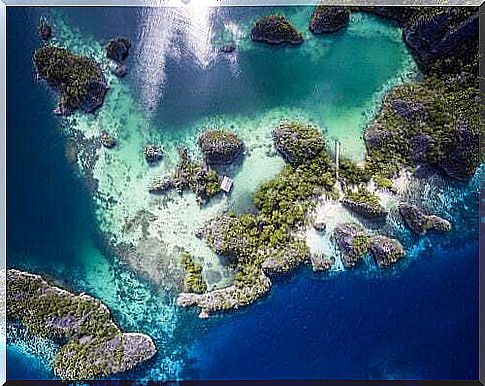
Reducing emissions: our main concern
As we have seen, coral reefs are one of the most amazing marine structures that nature has given us. However, corals could not survive were it not for the multitude of species that inhabit them and make their proliferation possible.
The symbiotic relationship between corals and algae is crucial for the survival of coral reefs, as is the fact that the sun’s rays reach their surface. But once again the action of man destroys nature, causing the progressive disappearance of the ecosystems of coral reefs.
Therefore, we must be aware of this damage and reduce global emissions to protect and preserve these living things.




